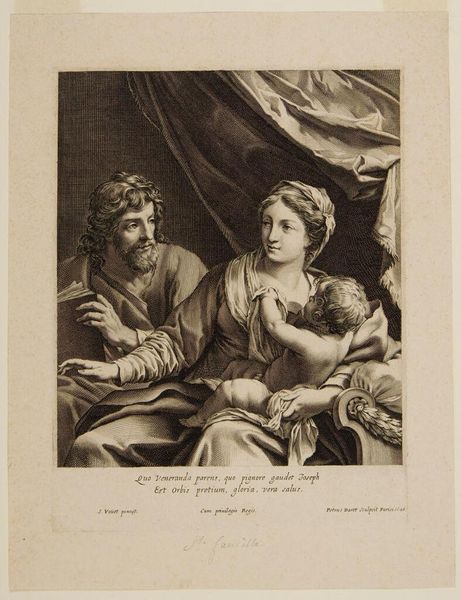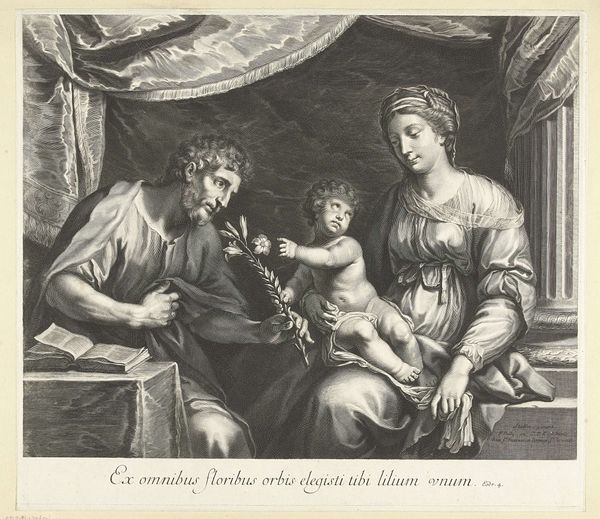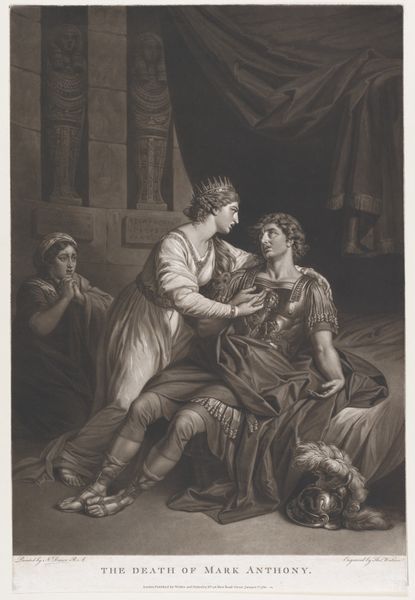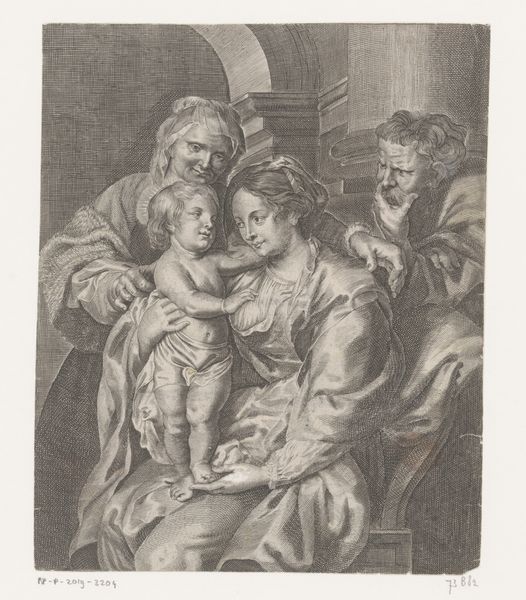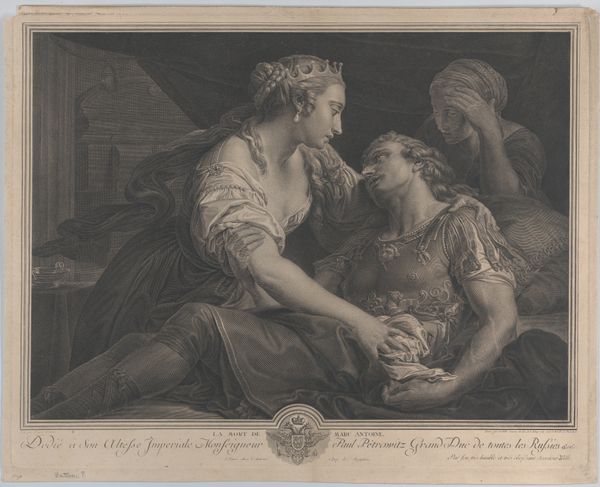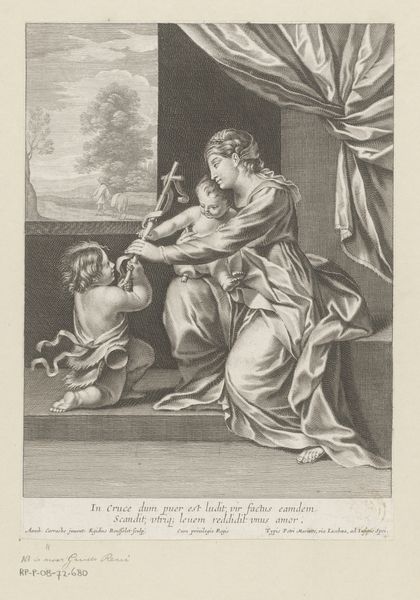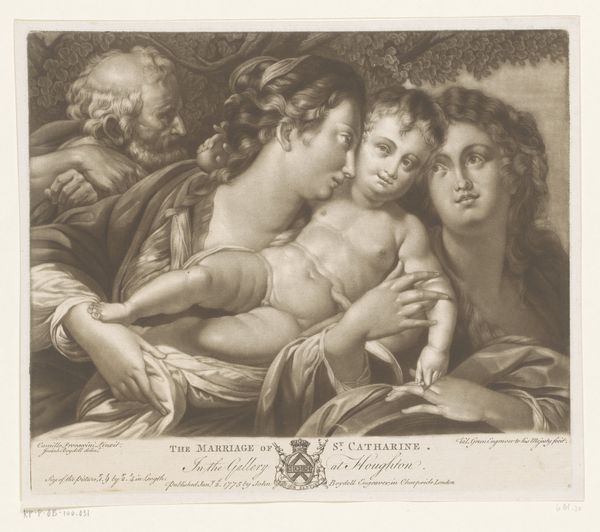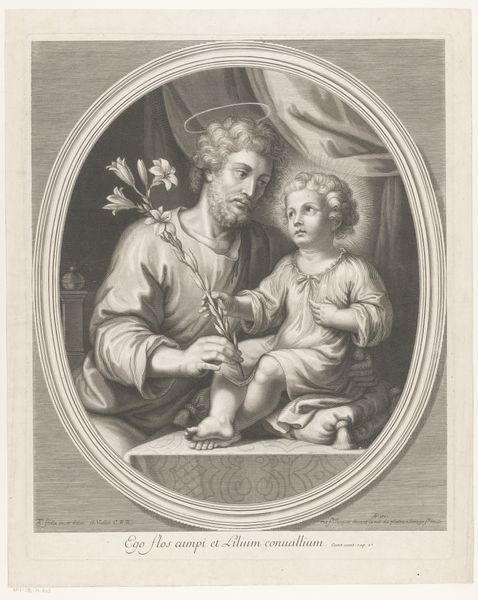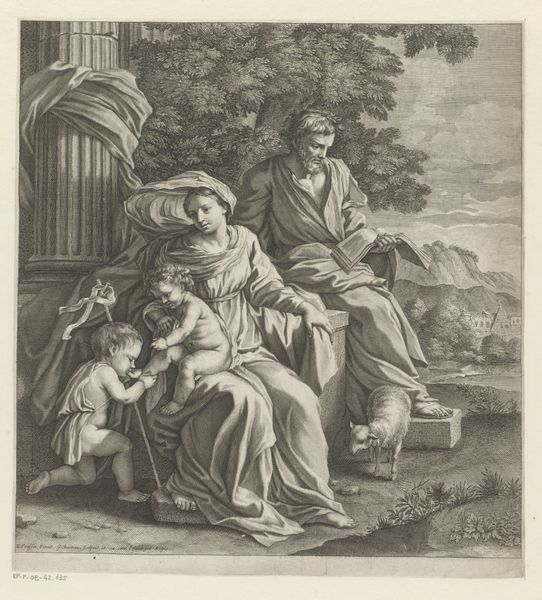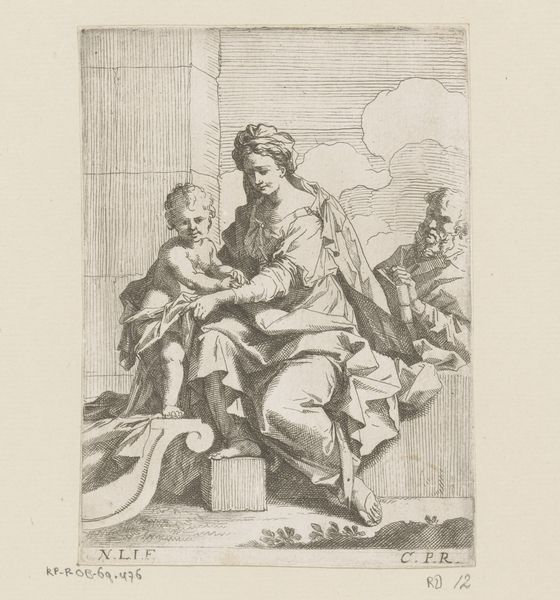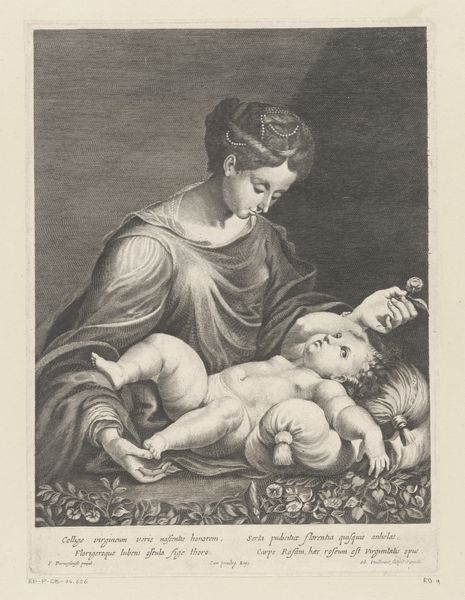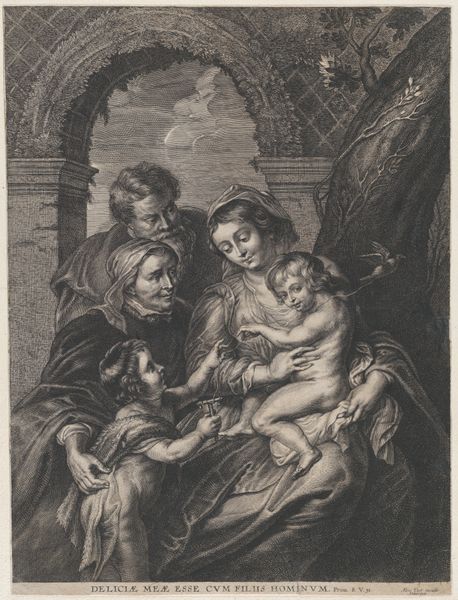
engraving
#
baroque
#
group-portraits
#
history-painting
#
engraving
Dimensions: height 278 mm, width 208 mm
Copyright: Rijks Museum: Open Domain
Curator: Looking at this engraving, "Heilige Familie" or "Holy Family" by Pierre Daret, created in 1646, I am immediately struck by the almost bourgeois quality given to a very central theme for Catholicism. The family looks comfortable, serene, almost as though in a family portrait. Editor: Indeed. I see how the delicate lines used to depict each figure evoke feelings of gentle protectiveness and piety. The lines of sight tell a lot, as well: Mary looks adoringly at baby Jesus, who seems to look upwards, in search of divinity. Joseph, for his part, appears to be an introspective guardian. Curator: Daret places this intimate moment under this somewhat baroque curtain, perhaps to elevate this to a historical, perhaps even political, commentary? Considering it was created in 17th century, amid religious wars, is he perhaps showcasing the kind of family values and virtues royalty may have wanted to portray in that period? Editor: Certainly, one could read it that way. Consider the Latin inscription at the bottom—it lauds the parents and claims their child brings "glory and true health," not unlike how royal births were publicly promoted. Yet, by presenting them in domestic closeness, he also universalizes the sanctity of the family. What do you make of the rather pensive expression on Joseph? It almost has an element of worry. Curator: Precisely. While the composition speaks of glory and righteousness for the world, I notice he's holding a book, presumably about scripture or prophecy. Daret seems to imply, here, that this moment of domestic bliss is being framed within, or even threatened by, a future of some strife, both earthly and spiritual. Perhaps the religious wars I mentioned just now. Editor: A subtle suggestion of foreboding, indeed. By interweaving divine symbolism within the very real societal implications of the era, he transcends a purely devotional icon. Curator: Indeed, Daret gives us more than just the 'Holy Family.' It's a reflection of the turbulent times in which families sought refuge, protection, and salvation. Editor: Precisely. He captures not only the idealized, pious view but also imbues it with the reality and, therefore, makes it relatable.
Comments
No comments
Be the first to comment and join the conversation on the ultimate creative platform.
